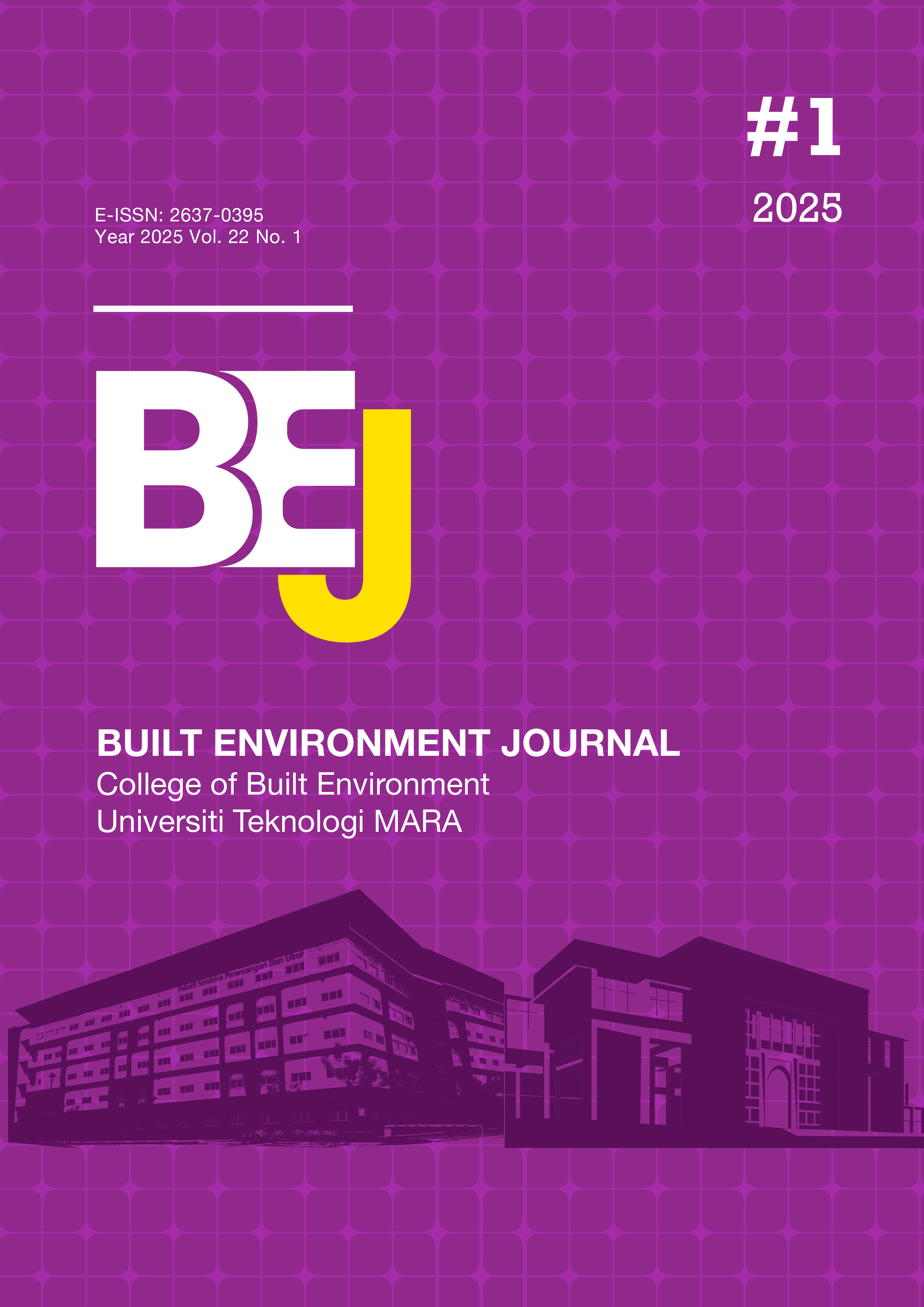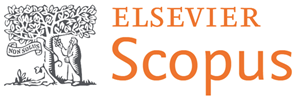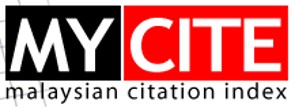Modelling Factors Influencing the Replacements’ Characteristics of Malay Reserved Land Using PLS-SEM In Klang Valley, Selangor, Malaysia
DOI:
https://doi.org/10.24191/bej.v22i1.944Keywords:
Malay Reserve Land (MRL), Replacement, PLS-SEM Model Assessment, Klang Valley (KV), MalaysiaAbstract
Malay Reserve Land (MRL) is one form of land ownership that has been dedicated to the Malay native community and following Article 89 of the Federal Constitution which protects the Malay Reserve Land (MRL), the area must be ensured not to be reduced in the event of revocation. According to the Ministry of Natural Resources, up to the present time, there have been fluctuations in the area of Malay Reserve Land (MRL) in Selangor and various states across Peninsular Malaysia. These fluctuations have been influenced by the revocation and substitution of Malay Reserve Land (MRL) to develop public infrastructure and reclaim the land for public facilities development. Hence, these have been a caused the occurrence in a mismatch between the replacements' characteristics of the Malay Reserve Land (MRL) and the Revocation Land. Therefore, this study specifically aims to assess the key factors influencing the replacements' characteristics for the Malay Reserve Land (MRL) in Klang Valley (KV), Selangor, Malaysia. Ten (10) replacements’ characteristics have been evaluated through the PLS-SEM model assessment and involved the distribution of 366 questionnaires to a target group comprising Klang Valley (KV) residents in the study area. The data collection was carried out through Systematic Random sampling. As a result, the modelling analysis revealed that Applicant's Dependent Cost characteristic did not significantly influence the replacements' characteristics for the Malay Reserve Land (MRL) in the study area. Thus, characteristics of Malay Reserve Land (MRL) replacement in the existing guidelines have been assessed in the Klang Valley (KV)’s area and the gap has been identified.
References
Abdullah, R., Nasir, N., & Ahmad, N. (2017). The importance of MRL to the Malays. Journal of Land Use Policy, 60, 20-29. https://doi.org/10.1016/j.landusepol.2016.10.016
Abu, F., Gholami, H., Saman, M. Z. M., Zakuan, N., Streimikiene, D., & Kyriakopoulos, G. L. (2021). An SEM approach for the barrier analysis in lean implementation in manufacturing industries. Sustainability, 13(1978). https://doi.org/10.3390/su13041978
Aliasak, M. H. H. (2017). Tanah Rizab Melayu: Sejarah dan cabaran. Kertas Kerja Tanah Rizab Melayu, Kerajaan Negeri Perak.
Amin, M., Thurasamy, R., Aldakhil, A. M., & Kaswuri, A. H. B. (2016). The Effect of Market Orientation As A Mediating Variable In The Relationship Between Entrepreneurial Orientation and SMEs Performance. Nankai Business Review International, 7(1), 39–59. https://doi.org/10.1108/NBRI-08-2015-0019
Becker, J. M., Klein, K., & Wetzels, M. (2012). Hierarchical Latent Variable Models in PLS-SEM: Guidelines for Using Reflective-Formative Type Models. Long Range Planning, 45(5-6), 359–394. https://doi.org/10.1016/j.lrp.2012.10.001
Gholami, H., Rezaei, G., Saman, M. Z. M., Sharif, S., & Zakuan, N. (2016). State-Of-The-Art Green HRM System. Journal of Cleaner Production, 124, 142–163. https://doi.org/10.1016/j.jclepro.2016.02.105
Hair, J. F., Risher, J. J., Sarstedt, M., & Ringle, C. M. (2019). When To Use and How To Report The Results of PLS-SEM. European Business Review, 31(1), 2–24. https://doi.org/10.1108/EBR-11-2018-0203
Hashim, S. F., Nasrudin, N., Othman, R. N. R., Abdullah, Y. A., & Salleh, M. Z. M. (2023). Key Factors Influencing The Family-Friendly Neighbourhood Through PLS-SEM Model Assessment: Case Study: SS4, Petaling Jaya, Selangor, Malaysia. Journal of the Malaysian Institute of Planners, 21(5), 78-95.
Kalfas, D., Kalogiannidis, S., Chatzitheodoridis, F., & Toska, E. (2023). Urbanization and Land Use Planning for Achieving The Sustainable Development Goal (SDGs): A Case Study of Greece. Urban Science, 7(43). https://doi.org/10.3390/urbansci7020043
Khalid, M. S., Nor, R. M., & Hassan, A. (2020). The sustainability of Malay Reserve Land: Issues and Challenges. International Journal of Social Science and Humanities Research, 8(3), 123-134.
Malaysia (2012). Federal Constitution. (Article 89(3)).
Norazlina, M. N., & Ismail, M. H. (2018). The Impact Of Land Value Increase On MRL Ownership in Urban Areas. Journal of Real Estate Research, 29(2), 150-162.
Salleh, M. Z. M., Othman, N., Malek, N. A., & Suddin, L. S. (2022). A Paradoxical Proposition Of Connectedness To Nature, Recycling Behaviour and Psychological Restoration Relationship in Urban Park Context: A Path Analysis Evidence. Journal of the Malaysian Institute of Planners, 20(1), 101-111.
Scholtz, B., Mahmud, I., & Ramayah, T. (2016). Does Usability Matter? An Analysis of The Impact of Usability on Technology Acceptance in ERP Settings. Interdisciplinary Journal of Information, Knowledge, and Management, 11, 309–330. https://doi.org/10.28945/3591
Selangor Land and Mines Director's Circular No. 3/2015. (2015). Replacement Characteristics Of The Malay Reserved Land.
Shamsuddin, S., & Hamzah, Z. (2017). Policy and Regulatory Challenges in The Management of Malay Reserve Land. Journal of Malaysian Studies, 35(1), 44-59.
United Nations Economic Commission for Europe. (1996). Land Administration Guidelines: With Special Reference to Countries In Transition. United Nations.
Downloads
Published
How to Cite
Issue
Section
License
Copyright (c) 2025 Mohammad Firdaus Ishak, Abdul Hadi Nawawi , Mohd Hasrol Haffiz Aliasak, Siti Fatimah Hashim

This work is licensed under a Creative Commons Attribution-NonCommercial-NoDerivatives 4.0 International License.
CC BY-NC-ND 4.0 DEED
Attribution-NonCommercial-NoDerivs 4.0 International












